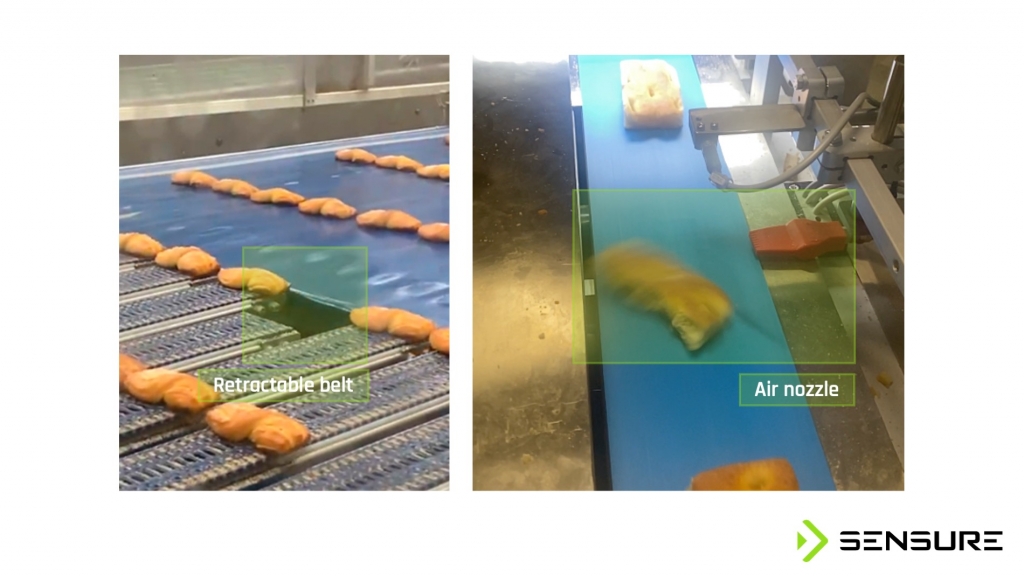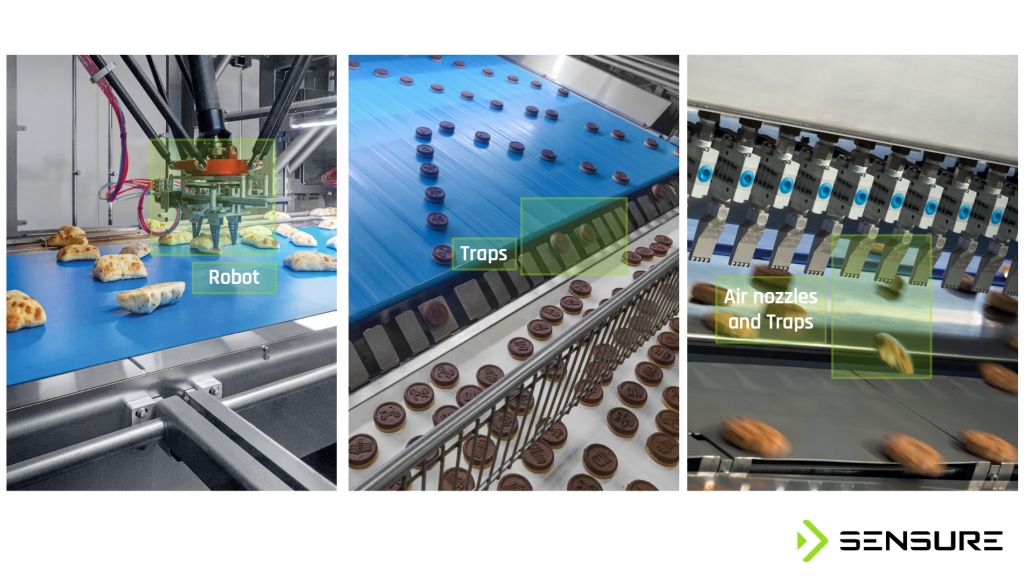Optimizing Product Quality: the expertise in choosing the right rejection mechanism
Choosing the right rejection mechanism is important to ensure non-compliant products are accurately removed from the production line.
In addition to implementing advanced product inspection technology to identify any quality issues, manufacturers must also have automated systems in place to efficiently remove non-complaints products. However, there are various types of reject devices, and selecting the appropriate one for a specific application is crucial to ensure non-complaints products are eliminated.
To determine the most suitable option, manufacturers should consider several factors, such as:
- Type of product (dough, baked, with/without topping, etc.)
- Product's dimensions and how they are presented into the vision inspection system (orientation and spacing between products)
- Line width
- Throughput rate on the line/Speed of the line
- Space available
- Where it is necessary to direct non-compliant products (conveyor, bin, etc.)
It is also important to install a conveyor speed encoder to manage the timing of the rejecter and ensure the accurate removal of non-compliant products.
In certain situations, when a non-conforming product is rejected, it may be advisable to consider re-processing it (instead of disposing). In these instances, instead of using rejection systems, products redirection systems can be used to divert the rejected product for secondary inspection or additional processing.
Types of rejection devices:
- Conveyor shutdown or alarm
- Air jet with nozzles (from top, bottom or lateral) - This type of reject device is ideal for rejecting small to medium size products. Heavy-duty air nozzles or a combination of more can also be used to remove larger products
- Traps – These are conveyor-based rejection systems that can lower or raise temporarily a portion of the conveyor to reject non-compliant products. They can move linearly or they can be hinged and these traps can be also configured as drop nose bars
- Retractable belts – They comprise an end roller that retracts to create a gap in the product flow for items to pass through. Following rejection, the roller swiftly returns to the closed position, moving faster than the belt's speed to prevent product entrapment. This reject mechanism is also well-suited for multi-lane applications
- Pusher (air cylinder with a plate mounted) - This type of reject device is ideal for rejecting
medium to heavy-weight products, evenly spaced and oriented on a narrow belt width - Swing Gate – They use a pivoting paddle to 'sweep' items off the conveyor and into two different conveyors. This type of reject device is ideal for rejecting medium to heavy-weight products
- Robot - The use of robots for product pick & place allows for high flexibility but takes up more space on the production line. Robots can also handle products of small, medium, and large sizes by changing their grippers

